The Art of Crafting a Vision with Sample Product Roadmaps
Learn about the art of crafting a vision with sample product roadmaps.
Welcome to a Journey of Discovery! Imagine standing at the crossroads of innovation and strategy, where every path leads to exciting new possibilities.
This is where product roadmaps come into play, acting as the guiding stars in the vast product development universe.
Unveiling the Blueprint of Success
Unlocking the Secrets of Effective Planning. Have you ever wondered how industry leaders consistently deliver groundbreaking products?
The secret lies in their meticulously crafted product roadmaps – the unsung heroes behind every successful launch. These are merely plans and visionary blueprints that blend ambition with practicality.
The Magic Behind the Maps
A Story of Aspirations and Achievements. Each product roadmap is a narrative, a compelling tale of aspirations, challenges, and triumphs.
It’s a strategic art form, balancing what’s desired and feasible. The beauty of a product roadmap lies in its flexibility and foresight, adapting to ever-changing market dynamics while keeping the end goal in sight.
Ditch the Dust Bunnies: Build Roadmaps Your Team Will Actually Drive.
Say goodbye to outdated blueprints and hello to agile blueprints that move with your market. This isn’t your grandpa’s roadmap workshop.
Turning Visions into Victories
Charting the Course to Success. The creation of a product roadmap is a dance of precision and creativity. It’s about predicting trends, understanding customer needs, and aligning them with your business goals.
A well-crafted roadmap is a beacon that lights the way for teams, aligning efforts and fostering innovation. It’s not just about where you’re going but how you get there – a journey that is as important as the destination.
What are the different types of Product Roadmaps?

Choosing the right type of product roadmap is crucial for effectively aligning your team and communicating your product vision. Each type has its strengths and weaknesses, tailored to different situations and audiences. Here’s a breakdown of the most common types:
1. Feature-based Roadmaps:
- Focus: Specific features and functionalities planned for development.
- Strengths: Clear and detailed, stakeholders clearly understand upcoming changes.
- Weaknesses: Can be rigid and inflexible, overlooking broader strategic goals.
2. Goal-oriented Roadmaps:
- Focus: High-level goals and objectives the product aims to achieve.
- Strengths: Strategic alignment allows for flexibility in feature prioritization and adaptation.
- Weaknesses: It needs more detail, making it easier to visualize specific implementation plans.
3. Theme-based Roadmaps:
- Focus: Overarching themes that guide product development in a particular direction.
- Strengths: Provides strategic direction without getting bogged down in specifics. Good for exploring new ideas and iterative development.
- Weaknesses: Can be vague and need concrete action plans.
4. Time-boxed Roadmaps:
- Focus: Delivering specific features or goals within a set timeframe, often used in agile development.
- Strengths: Promotes focus and prioritization and keeps teams accountable for timely delivery.
- Weaknesses: Can be limiting and inflexible, not ideal for long-term strategic planning.
5. Persona-based Roadmaps:
- Focus: Addressing the needs and pain points of specific user personas.
- Strengths: Ensures product development remains user-centric and prioritizes features that deliver the most value to target users.
- Weaknesses: Can be complex to create and maintain, may need to pay more attention to broader market needs.
Bonus: There are also hybrid roadmaps that combine elements from different types, like a feature-based roadmap with overarching themes or a goal-oriented roadmap with time-boxed milestones.
Ultimately, the best roadmap type depends on your product, team, and audience. Choose the one that best helps you communicate your vision and keep everyone aligned!
Embark on the Roadmap Adventure
Your Guide to Mastering the Craft. As we delve deeper into the world of product roadmaps, we’ll uncover the strategies that transform visions into realities.
From defining objectives to navigating challenges, we’ll explore how to create roadmaps that inspire and deliver.
Join us as we unravel the secrets of successful product roadmapping and embark on a journey to elevate your products from mere ideas to market triumphs.
Prepare to embark on an enlightening journey through product roadmapping, where every step is a stride toward success. Let’s begin this adventure together, unraveling the mysteries and mastering the art of turning visions into victories.
Exploring the landscape of product roadmaps in 2024 reveals several intriguing trends and statistics that are shaping the way products are managed and developed:
- Rapid Prototyping and Shorter Product Life Cycles: With advancements in technologies like 3D printing, product managers are adapting to faster cycles of feedback and iterations, potentially leading to shorter product life cycles. This trend emphasizes continuous innovation and staying ahead of market trends.
These statistics and insights highlight the evolving nature of product management and the importance of staying informed and adaptable to new trends and technologies.
The Balancing Act: Aligning Vision with Reality
Navigating the Murky Waters of Over-Ambition: One of the most common challenges businesses face with product roadmaps is the risk of over-ambition.
Crafting an aspirational roadmap can set teams up for failure, leading to missed deadlines, overshot budgets, and a demoralized workforce. It’s a tightrope walk between dreaming big and staying grounded in reality.
The key lies in balancing visionary goals with achievable milestones, ensuring the roadmap is challenging yet realistic.
The Puzzle of Changing Market Dynamics
Adapting to the Whims of Market Trends: In today’s rapidly evolving market, the roadmap’s ability to adapt to changing market trends and customer needs is another challenge.
A flexible roadmap can render a business’s products relevant and relevant when they hit the market.
This calls for a flexible and dynamic approach to roadmap planning, where businesses must be agile enough to pivot strategies in response to new information or shifts in market demand.
The Symphony of Cross-Departmental Harmony
Orchestrating Alignment Across Departments: A product roadmap isn’t just a plan for the product team; it’s a blueprint that affects sales, marketing, customer service, and more.
Ensuring all departments align with the roadmap’s vision and timelines is a significant challenge. Misalignment can lead to disjointed efforts, mixed customer messages, and missed opportunities.
To overcome this, businesses must foster strong communication and collaboration across all teams, ensuring everyone is in sync with the roadmap’s objectives and progress.
Stop Wasting Ads! Get Laser-Targeted Clicks (and Customers) with AI
Tired of ad duds? Get eyeballs on your brand with laser-focused online ads that convert. Click to unleash the power of targeted marketing!
The Conundrum of Resource Allocation
Juggling the Finite Resources: Resource allocation is critical to roadmap execution. One challenge is allocating limited resources- budget, human resources, or time – efficiently to various roadmap initiatives.
Overcommitting resources to one project can starve others, leading to delays and compromised quality.
Businesses must develop a keen understanding of their resource pool and create a strategic plan for optimal allocation, ensuring that no part of the roadmap suffers from neglect.
The Roadmap to Success
Navigating these challenges is like solving a complex puzzle. Whether aligning the vision with reality, adapting to market changes, fostering cross-departmental collaboration, or reasonable resource allocation, each piece plays a crucial role in successfully executing a product roadmap.
Businesses that master these challenges can turn their roadmaps into powerful tools that guide them to success in the competitive market.
It’s a journey that requires patience, agility, and strategic foresight. Still, the rewards of a well-executed product roadmap are immense – leading to innovative products, satisfied customers, and a thriving business.
Charting the Course: Implementing Product Roadmaps Step-by-Step
Step 1: Setting the Stage – Defining Your Vision and Objectives
The Foundation of Your Journey. Before you chart the course, you need to know your destination. Start by defining the overarching vision of your product. What problem does it solve?
How does it fit into the market? This vision will be the guiding light for your roadmap. Next, establish clear, measurable objectives.
These could range from market penetration targets to specific feature developments. This stage is about understanding where you want to go and what success looks like.
Step 2: Gathering Intelligence – Conduct Market Research
Navigating the Market Seas. With your vision and objectives in place, it’s time to gather intelligence. This involves conducting thorough market research to understand customer needs, industry trends, and competitor strategies.
Use surveys, focus groups, and market analysis tools to collect data. This step is crucial as it ensures your roadmap is grounded in market reality and customer insights, making it relevant and actionable.
Step 3: Plotting the Route – Creating the Roadmap
Drawing Your Map. Now comes the exciting part – creating the roadmap. Start by listing the major milestones and features aligning with your objectives.
Use a roadmap tool or software for visual representation, making it easier to understand and communicate. Remember, a good roadmap is flexible, so build the ability to adapt as circumstances change.
Assign timelines to each milestone, but be realistic about what can be achieved within each timeframe.
Step 4: Aligning the Crew – Stakeholder Buy-In and Team Alignment
Ensuring Everyone is Onboard. A roadmap isn’t just for the product team; it impacts the entire organization. Present your roadmap to key stakeholders – marketing, sales, customer support, and upper management – to get their buy-in.
Their feedback might lead to adjustments in the roadmap.
Ensure everyone understands their role in the roadmap’s execution. This alignment is crucial for seamless execution and avoiding cross-departmental conflicts.
Step 5: Embarking on the Voyage – Execution and Adaptation
Setting Sail. With the roadmap set and the team aligned, it’s time to execute. This involves the actual development of the product, guided by the milestones outlined in the roadmap.
Regular check-ins are vital to track progress and ensure you’re on course. Be prepared to adapt the roadmap as new information and challenges arise.
This flexibility is key to responding effectively to unforeseen obstacles or opportunities.
Step 6: Navigating Through Feedback – Iteration and Improvement
Steering Through the Feedback Waters. Gather user feedback to refine and improve as your product develops and eventually launches.
Use this feedback to make iterative changes to your product, ensuring it continues to meet customer needs and market demands.
This step is a continuous loop – your product and roadmap should evolve as you gather more feedback.
The Journey Ahead
Implementing a product roadmap is like embarking on an adventurous journey. It requires a clear vision, thorough preparation, effective communication, and the agility to adapt to changing conditions.
Following these steps, you can navigate this journey successfully, leading your product from a mere concept to a successful market presence.
Remember, the roadmap is not just a plan; it’s a dynamic guide that evolves with your product and the market, steering you toward success in the ever-changing world of product development.
AI Precision: Optimize Decisions, Maximize Profits
Ditch guesswork. Embrace certainty. Our data-driven AI solutions deliver surgical insights and measurable results. Contact us today for a custom analysis.
Navigating the Roadmap to Success: A Concise Guide
The Compass of Clarity: Laying the Groundwork
Product roadmaps, the strategic blueprints guiding product development, are crucial for businesses that navigate the complex landscape of market trends, customer needs, and technological advancements.
This blog post delves into the intricate world of product roadmaps, highlighting their significance in a business’s journey from conceptualization to market success.
The initial stages of creating a product roadmap involve setting a clear vision and defining measurable objectives.
This foundational step ensures that the roadmap is not just a collection of goals but a strategic plan aligned with the business’s broader objectives and market realities. Product roadmaps provide a sense of purpose and direction by setting a clear direction, helping businesses avoid the pitfalls of aimless innovation.
Charting the Course: Market Research and Roadmap Creation
Conducting thorough market research is pivotal in shaping a product roadmap that resonates with market demands and customer preferences.
This step is akin to gathering the necessary intelligence before plotting a course. By understanding the landscape, businesses can tailor their roadmaps to address real market needs, giving them a competitive edge.
Creating the roadmap is a dynamic process involving listing key milestones and features that align with the business’s objectives. This stage transforms abstract concepts into a structured, visual plan, providing a clear path forward for product development teams.
Aligning the Sails: Stakeholder Engagement and Team Alignment
A product roadmap is a unifying document requiring stakeholders’ buy-in, including product teams, marketing, sales, and upper management.
Ensuring everyone is aligned with the roadmap’s vision and objectives is crucial for its successful execution.
This step reinforces the idea that a product roadmap is not just a tool for the product team but a strategic guide for the entire organization.
Setting Sail: Execution, Adaptation, and Feedback
The execution of the roadmap involves the development of the product guided by the outlined milestones.
This stage is where the roadmap comes to life, transforming plans into tangible results. However, it’s essential to maintain flexibility, allowing the roadmap to evolve based on feedback and new market insights.
This iterative process ensures that the product remains relevant and competitive.
Conclusion: The Strategic Advantage of Product Roadmaps
In conclusion, product roadmaps are invaluable tools that provide clarity, direction, and a structured approach to product development.
They offer numerous benefits, including aligning team efforts, attracting investor confidence, and ensuring products meet market demands.
Following the steps outlined in this blog, businesses can leverage product roadmaps to gain a competitive advantage, making informed decisions that propel them toward market success.
In essence, a well-crafted product roadmap is not just a plan; it’s a strategic asset that can guide businesses through the ever-changing terrain of the market, ensuring that they survive and thrive in the competitive world of product development.




